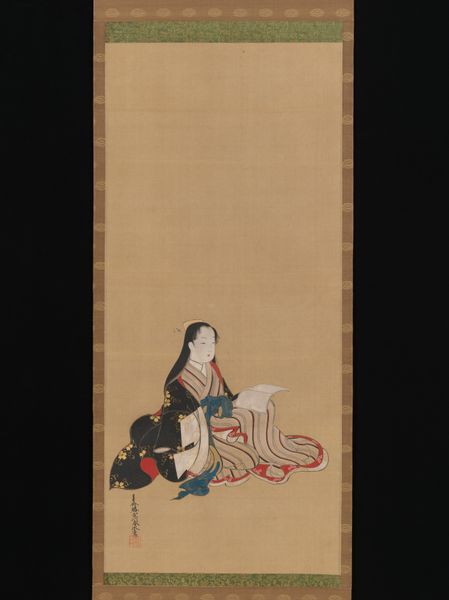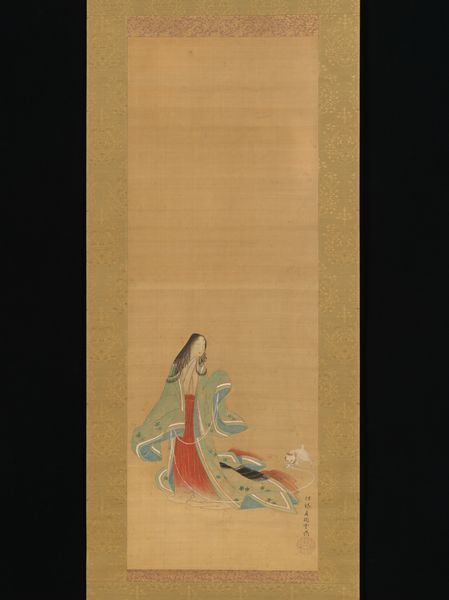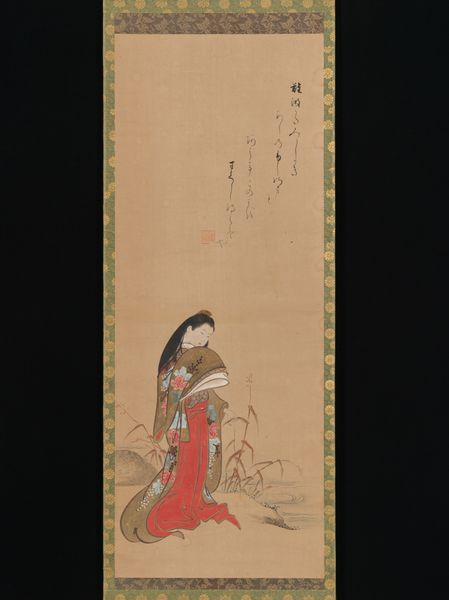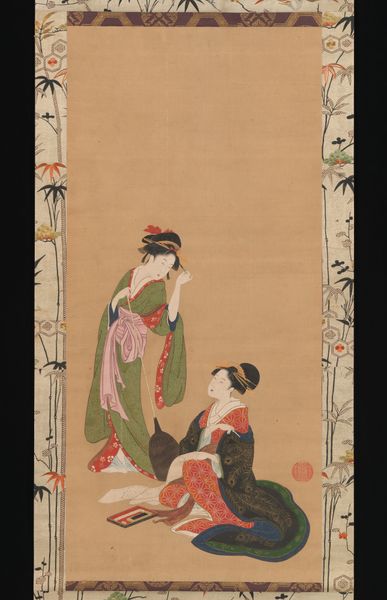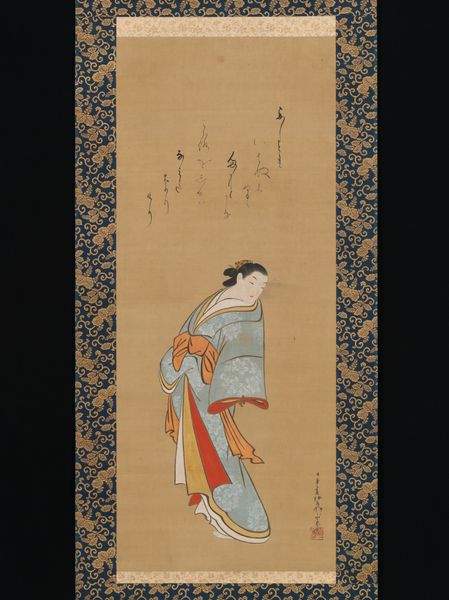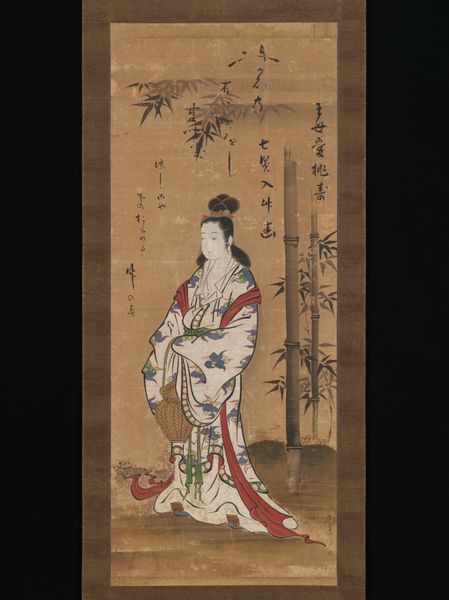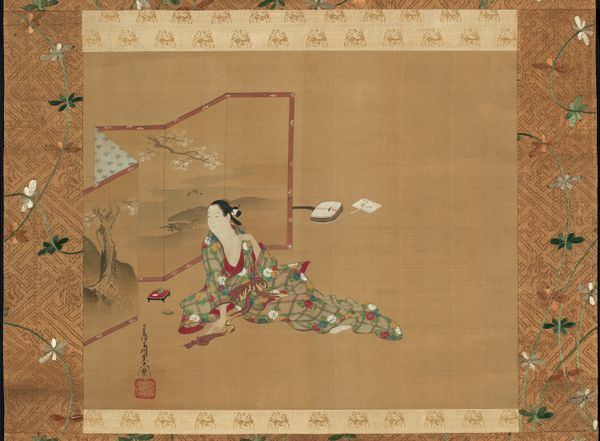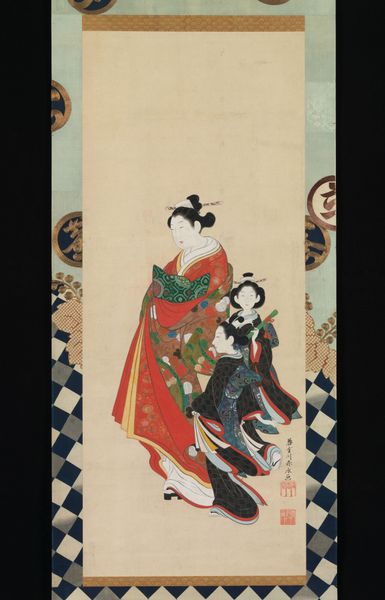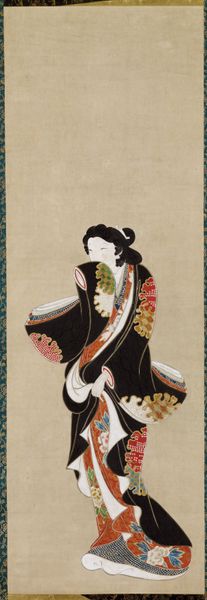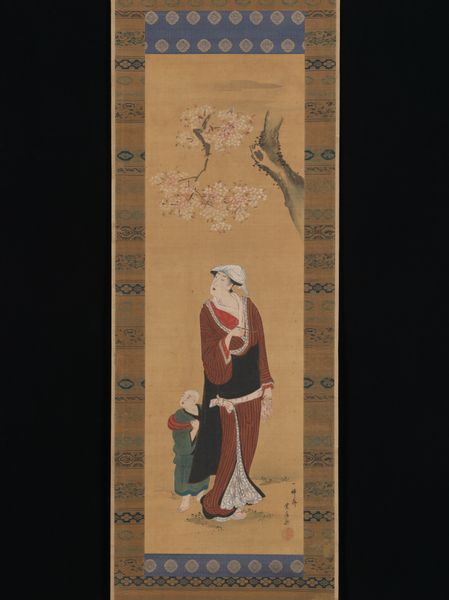
#
portrait
#
asian-art
#
ukiyo-e
#
folk art
#
figuration
#
folk-art
#
naive art
#
line
Dimensions: Image: 28 1/8 × 13 1/8 in. (71.4 × 33.4 cm) Overall with mounting: 59 1/16 in. (150 cm) Overall with knobs: 59 1/16 × 17 7/16 in. (150 × 44.3 cm)
Copyright: Public Domain
Tōsendō Rifū painted this image of a courtesan with ink and color on silk in the early 18th century, during the Edo period in Japan. This image invites us to consider the lives of courtesans in Japanese society. As highly skilled entertainers, they occupied a unique space, often becoming cultural icons, yet they were also bound by strict social hierarchies and expectations. Rifū captures the complex role of women in the floating world. He paints her with a demure gaze, her posture is one of learned grace, yet, we can also read a sense of melancholy. Consider how the artist, himself a member of the samurai class, portrays this figure. How does he balance admiration with the social realities of her profession? The poem inscribed above the figure adds another layer to our understanding, perhaps hinting at the transient nature of beauty and pleasure. It reminds us that the courtesan's identity was both constructed and performed, shaped by the desires and expectations of her clientele.
Comments
No comments
Be the first to comment and join the conversation on the ultimate creative platform.

